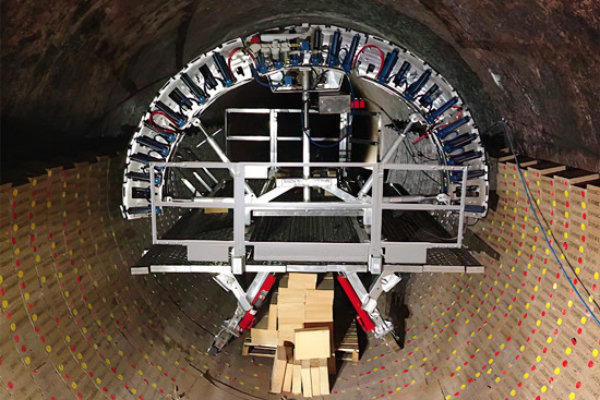Cement kiln refractory brick lining construction steps
What are the requirements for the construction steps of a cement kiln? Get a longer life for your kiln by knowing some precautions for building вогнетрывалай цэглы.
Cement kiln refractory brick lining construction steps

(1) Preparations before construction
Build the bridge, clean up the construction site, and pull the auxiliary line for masonry.
(2) Construction process
- Build the lower half ring of refractory brick lining first;
- The lower half circle of masonry is completed, and the arch tire formwork platform is supported stably and firmly;
- Place the refractory brick on the clamping device of the platform, and press it tightly on the kiln body by the hydraulic cylinder;
- Start laying the upper half ring of refractory brick lining;
- lock brick lock;
- Pouring construction of castable lining at kiln mouth and kiln tail;
- Wedge the steel plate in the brick joint to make it fast, and confirm the inspection.
Basic requirements for refractory brick construction
The refractory brick lining should be close to the shell. The joints of the refractory bricks should be tight and straight, the intersection should be accurate, the bricks should be locked firmly, and there should be no misalignment, sagging, or hollowing. During the masonry process, the running concentricity of the brick lining and the kiln barrel should be checked frequently. Whether they overlap and make timely adjustments.
The top of the refractory brick lining should be completely attached to the cylinder surface without gaps. The large surfaces of adjacent single bricks should be in full contact. The length of the processed bricks should not be less than 50% of the original bricks, and the thickness should not be less than 80% of the original bricks.
Refractory brick expansion joint requirements
When using the ring masonry method, the permissible deviation of the length of the circular joint per meter shall not exceed 2mm, but the permissible deviation of the length of a single ring shall not exceed 8mm.
Requirements for steel plates wedged into seams of refractory bricks
The thickness of the steel plate is usually 1 to 3mm, and the surface is required to be smooth without curling, twisting, burrs, г.д.; the width of the steel plate is required to be about 10mm smaller than the width of the refractory brick; the edge of the steel plate should not exceed the refractory brick, and there must be no gaps or bridges; Only one steel plate can be wedged in each brick joint, and the steel plate cannot be wedged in the brick joint of the lock brick.
Lock brick requirements
Each ring is built to the position of the last 5-6 цэглы, and the combination of main bricks and processed bricks is pre-placed to meet the tightness requirements. Adjacent ring joint bricks should be staggered by 1~2 bricks, and the end brick ring should be locked 1~2 rings ahead of time.
Precautions for construction of refractory brick lining in cement kiln
During construction, hard objects (such as hammers) are not allowed to be used to directly hit the bricks, and refractory brick masonry is not allowed to be used as an anvil for processing, brick cutting and other operations.
Refractory bricks must not have the following phenomena: inversion of size, lottery, mixing, misalignment, inclination, uneven mortar joints, climbing, off-center, heavy joints, opening, voids, hair joints, snake bends, brick bulges, missing Edges and angles, г.д.
 Фабрыка вогнеўпораў Rongsheng
Фабрыка вогнеўпораў Rongsheng
WeChat
Адсканіруйце QR-код з дапамогай wechat